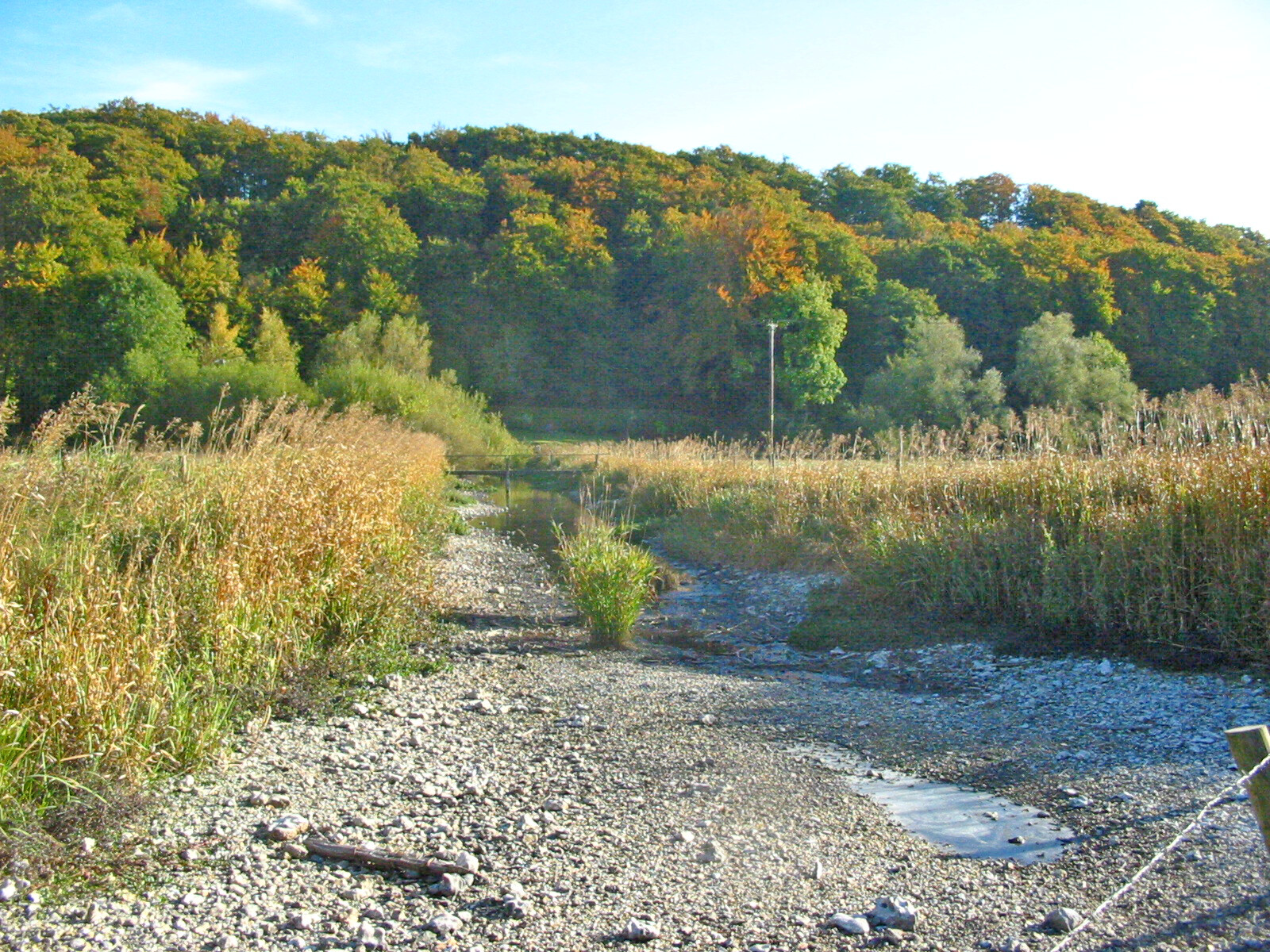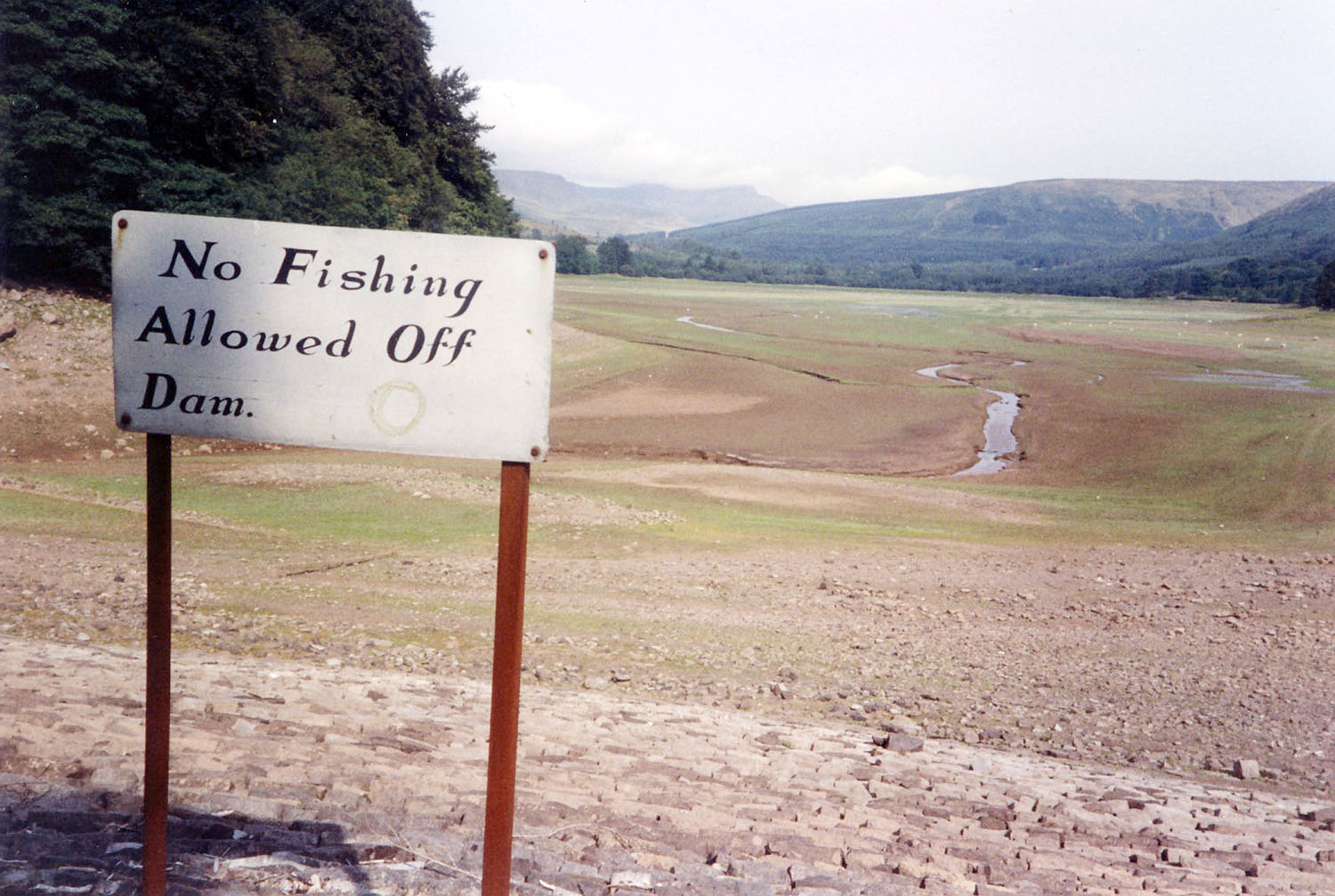Groundwater provides water even during periods of lower than average rainfall, when surface waters dry up. However, this resilient resource can still fail if rainfall is reduced over a long period. BGS is working to better understand how groundwater droughts occur and the effects they have on people and the environment.
Groundwater drought can have significant negative social and economic impacts on communities that are particularly reliant on groundwater.

Dry stream bed of River Till, Berwick St James, Wiltshire, in 2004. BGS © UKRI.
What is a groundwater drought?
Groundwater drought is the sustained and extensive occurrence of below average availability of groundwater.
Aquifers in the UK are usually replenished with water during the winter months, so groundwater droughts may develop if there is reduced rainfall over one or successive winters. Groundwater drought can be exacerbated by high demand for water during unusually hot or particularly dry summers.
Groundwater droughts are marked by lower than average water levels in aquifers, borehole and wells, and by reduced flows to groundwater-fed rivers and wetlands.
Why is groundwater important during surface water droughts?
Groundwater is an important part of the UK’s water supply. It is generally more resilient to drought than surface water due to the relatively slow response of groundwater to changes in rainfall.
At times of surface-water drought, groundwater becomes a critical national resource. As well as providing domestic, agricultural and industrial water supplies, groundwater supports ecologically important flows in many of our rivers during episodes of drought.
BGS drought research
We have been researching groundwater drought in the UK and internationally for many year.
The European Groundwater Drought Initiative (GDI) was a collaborative project that assessed and modelled groundwater-drought status across Europe, investigated the impacts of groundwater drought, and built a community to grow our understanding of the phenomenon of groundwater drought.
BGS and the UK Centre for Ecology and Hydrology (UKCEH) produce a monthly assessment of groundwater resources in the UK. We advise environmental regulators and government departments on groundwater resources during drought episodes.

Neuadd Reservoir north of Merthyr Tydfil during the 1976 drought. BGS © UKRI.
Understanding UK groundwater droughts
The UK has experienced several groundwater droughts over recent decades; BGS hydrogeologists have investigated some of these to better understand how future groundwater droughts may develop.
We are also undertaking a systematic analysis of groundwater droughts in the UK for the whole of the 20th century. The aim of this work is to improve how groundwater droughts are monitored and predicted in the future by investigating the relationship between the length of droughts and the area affected by droughts.
BGS and UKCEH staff have produced assessments of the following droughts:
Reports describing groundwater droughts can also be found at the National Hydrological Monitoring Programme.
Groundwater droughts in Africa
BGS researchers have worked extensively to understand how groundwater droughts in Africa affect the livelihoods of people who depend on groundwater. In particular, our work has highlighted the importance of the links between availability, access and demand for groundwater during droughts.
Our investigations of how groundwater droughts end and how groundwater flows to rivers are re-established at the end of drought episodes will assist future predictions of drought duration and effects.
Our research

European Groundwater Drought Initiative
Assessing, investigating and understanding groundwater drought across Europe.

